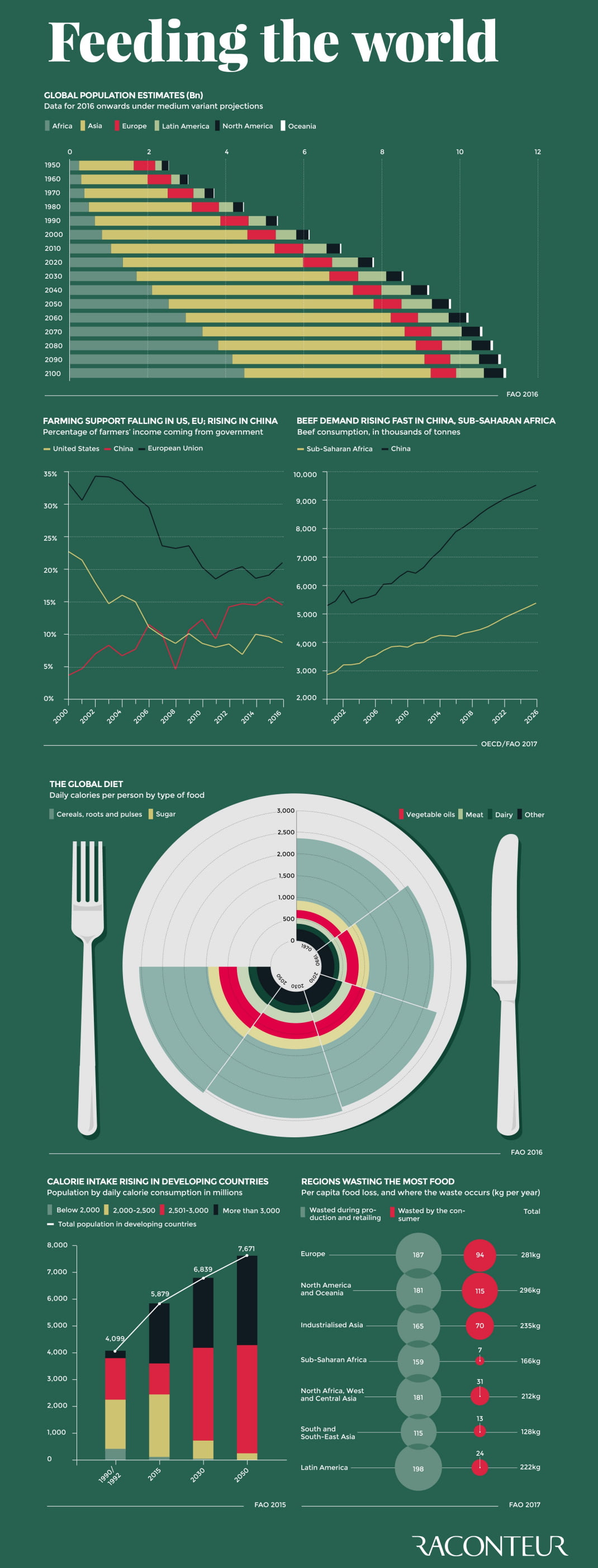
Visualizing a Rapidly Changing Global Diet
By 2050, there will be two billion more mouths to feed than today.
The increase in food supply required to feed this many people is difficult to fathom, but even that would just be scratching the surface of our future food needs.
Today’s infographic, which comes from Raconteur, makes it clear that the challenge of feeding the global population is actually magnitudes greater. The global diet is changing rapidly in both size and composition, especially in developing countries in Africa and Asia.
THE GLOBAL DIET
Right now, the average person consumes close to 3,000 calories per day – with the lion’s share coming from grains such as wheat, corn, or rice.
| Food | Avg. Daily Calories per Person (Global, 2011) | % of Diet |
|---|---|---|
| Total Diet | 2,870 | 100% |
| Grain | 1,296 | 45.2% |
| Sugar & Fat | 570 | 19.9% |
| Produce | 327 | 11.4% |
| Meat | 272 | 9.5% |
| Dairy & Eggs | 235 | 8.2% |
| Other | 170 | 5.9% |
However, the amount of food consumed by each person is growing around the world.
Between 2015 and 2030, it’s estimated that on a global basis, each person will be consuming an extra 110 calories per day.
MEAT AS A STAPLE
Increasing wealth and rising populations are key drivers for meat consumption in developing countries.
In China, which is already the world’s largest pork market, consumption of beef is expected to nearly double in the period between 2000 and 2026. In Sub-Saharan Africa, numbers are similar.
While beef is already extremely popular in many high-income economies, it is not the most sustainable food to produce. Beef needs more water and land per pound than almost any other protein source – but that’s not stopping people around the world in developing economies from eating it in greater amounts.
Meanwhile, in India, about one-third of the population is vegetarian – yet the country is turning into a major driver of new meat demand.
Since 2009, India’s annual disposable income has improved by 95 percent and meat consumption has increased by nearly 50 percent during the same time period.
– Anastasia Alieva, Head of Fresh Food Research at Euromonitor International
OUTSIDE THE BOX
To meet new demand for food, scientists are starting to think outside the box.
For an in-depth look at new technology envisioned for food production – including automated vertical farms, aquaponics, in vitro meats, and artificial animal products – make sure to visit the following infographic on the future of food.
[“Source-visualcapitalist”]
